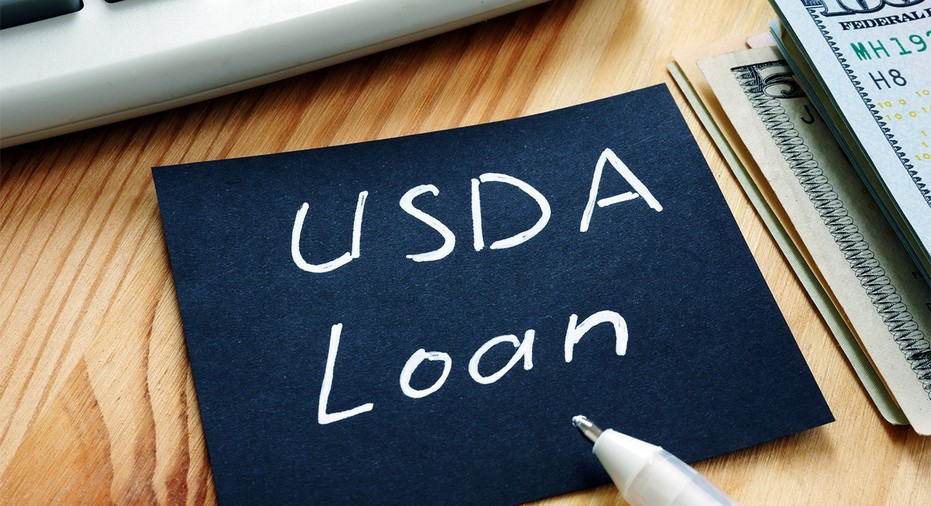For many first-time homebuyers, securing a mortgage can be a daunting process. With numerous loan options available, it’s important to understand which ones suit your needs and financial situation. One of the most beneficial and often overlooked programs is the USDA loan—a government-backed mortgage designed to help individuals and families in rural and suburban areas achieve homeownership. If you’re looking to buy a home and meet the requirements, a USDA loan can offer numerous advantages, such as zero down payment and low interest rates.
In this comprehensive guide, we’ll walk you through the process of qualifying for a USDA loan, providing step-by-step instructions and tips to help you take full advantage of this affordable option. We’ll cover everything from eligibility criteria, income limits, property requirements, to the necessary documentation and application process.
What is a USDA Loan?
A USDA loan, also known as a Rural Development Loan, is a mortgage program offered by the U.S. Department of Agriculture to encourage homeownership in rural and suburban areas. This type of loan is designed to help low- and moderate-income families purchase homes in designated areas that meet the USDA’s criteria.
The most significant benefit of a USDA loan is that it requires no down payment, which can make homeownership much more accessible for many first-time buyers who don’t have substantial savings for a down payment. In addition to this, USDA loans offer competitive interest rates, lower mortgage insurance premiums, and more lenient credit score requirements compared to conventional loans.
Step 1: Understand the USDA Loan Eligibility Requirements
To qualify for a USDA loan, you must meet specific eligibility criteria set by the USDA. These include income limits, credit score requirements, property location, and more. Let’s break them down.
1.1. Location Requirements
One of the key components of the USDA loan program is its geographic limitation. These loans are designed for rural and suburban areas, so your home must be located in a USDA-eligible area.
- Rural Areas: These areas are typically defined by their low population density and are usually located outside urban or metropolitan zones.
- Suburban Areas: Some suburban areas near large cities are also eligible, depending on population density and development.
The USDA uses a database to define eligible areas, and you can check if your desired location qualifies by using the USDA property eligibility map available on their website. If your home is located in a designated rural or suburban area, it may qualify for a USDA loan.
1.2. Income Limits
USDA loans are designed to assist individuals or families with moderate incomes. To qualify, your household income must fall within certain limits, which are based on the area in which you wish to purchase the property.
- Income Limits: USDA loans have specific income limits that vary by location and household size. These limits are typically set at 115% of the median income for that area.
- Adjusted Gross Income (AGI): USDA calculates income limits based on your adjusted gross income, which excludes certain deductions, such as retirement contributions or healthcare costs.
You can find income limits for your area on the USDA website or by contacting an approved lender. Keep in mind that USDA loans are meant to help those who may struggle to afford a conventional mortgage, so if your income exceeds the limit for your area, you may not be eligible for the program.
1.3. Credit Score Requirements
USDA loans are known for their flexibility when it comes to credit score requirements. While traditional mortgage loans often require a credit score of at least 620 or higher, USDA loans can be approved with a score as low as 580. However, some lenders may have stricter requirements, so it’s best to check with your lender about their specific credit score criteria.
While credit scores play an important role in the qualification process, USDA loans are more focused on your ability to repay the loan and your overall financial situation.
1.4. Citizenship or Legal Residency
To qualify for a USDA loan, you must be a U.S. citizen, a U.S. non-citizen national, or a qualified alien (legal permanent resident). This ensures that the loan benefits go to individuals who are legally authorized to reside in the country.
1.5. Debt-to-Income (DTI) Ratio
Your debt-to-income ratio (DTI) is another critical factor in USDA loan eligibility. This ratio measures your monthly debt payments compared to your gross monthly income. USDA guidelines typically require your total DTI to be no higher than 41%, although some flexibility may be allowed if you have a higher credit score or other positive financial indicators.
In simpler terms, your monthly debt payments, including the mortgage, property taxes, insurance, and other debts (e.g., student loans, car loans), must not exceed 41% of your gross monthly income to qualify for the USDA loan.
Step 2: Verify Your Property Eligibility
In addition to meeting personal eligibility requirements, your property must also meet certain criteria to qualify for a USDA loan.
2.1. Property Type
The USDA only finances primary residences, meaning the property must be your main home. It cannot be used for vacation homes, investment properties, or second homes. The property should also be a single-family home, though USDA loans can also be used for certain types of multi-family homes if they meet specific criteria.
2.2. Condition of the Property
The property must be in good condition and meet USDA standards. It should be safe, sanitary, and structurally sound. The USDA may require an inspection or appraisal to ensure that the home meets these conditions.
2.3. Property Size
While the USDA does not have a specific limit on property size, the home should be modest in nature. The property must be suitable for the family size and should not be considered extravagant or excessive.
Step 3: Find a USDA-Approved Lender
Not all lenders offer USDA loans, so it’s essential to work with a lender that is approved by the USDA. These lenders are familiar with the USDA loan process and can guide you through the qualification, application, and approval stages.
To find a USDA-approved lender, you can visit the USDA website or inquire with local banks, credit unions, or mortgage companies. Many large national lenders and online lenders also offer USDA loans, but it’s still a good idea to shop around to compare rates, fees, and terms.
Step 4: Gather Your Documentation
Once you’ve found an approved lender and confirmed that you meet the USDA’s eligibility requirements, you will need to provide documentation to support your application. This documentation helps the lender verify your income, assets, and other financial information.
Typical documents you will need for a USDA loan application include:
- Proof of Income: Pay stubs, tax returns, and other income-related documents.
- Employment Verification: A recent pay stub or employment verification letter.
- Credit Report: Your lender will likely pull your credit report, but it’s helpful to know your credit score ahead of time.
- Tax Returns: Recent federal tax returns to verify income.
- Assets Information: Bank statements, retirement account details, or other documents that demonstrate your financial stability.
Step 5: Apply for the USDA Loan
Once you’ve gathered all necessary documentation, you can begin the formal application process. The USDA loan application process is similar to applying for other types of mortgages, with a few additional requirements. Your lender will guide you through this process, which typically involves:
- Completing the loan application: The lender will have a standard application form that you will need to fill out.
- Underwriting: After submitting your application, the lender will review your financial history, verify your income and assets, and assess your ability to repay the loan.
- Appraisal: The lender will order an appraisal to confirm the value and condition of the property.
- Approval: If everything checks out, you will receive USDA loan approval. The final loan terms and approval are based on your financial situation, the property, and USDA guidelines.
Step 6: Close on the Loan
After approval, you will move on to closing. This is where you sign the final loan documents and officially take ownership of your new home. The closing process for a USDA loan is similar to other types of mortgages, but you’ll need to pay attention to any specific USDA requirements, such as the upfront guarantee fee or other closing costs.
Once you sign the paperwork, your loan will be processed, and you will receive the keys to your new home!
Conclusion
Qualifying for a USDA loan is an excellent opportunity for first-time homebuyers, especially those with limited savings for a down payment. By meeting the eligibility criteria, verifying your income and credit, finding an approved lender, and completing the application process, you can take advantage of the many benefits this loan program offers, including zero down payment and low interest rates.
Remember that the USDA loan program is designed to help individuals and families in rural and suburban areas achieve homeownership, so be sure to verify that the property you’re interested in is located in an eligible area. By following this step-by-step guide and understanding the requirements, you’ll be well on your way to securing your USDA loan and purchasing your dream home with ease.
For more information visit the following sites:








